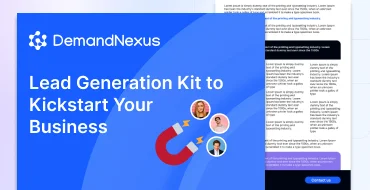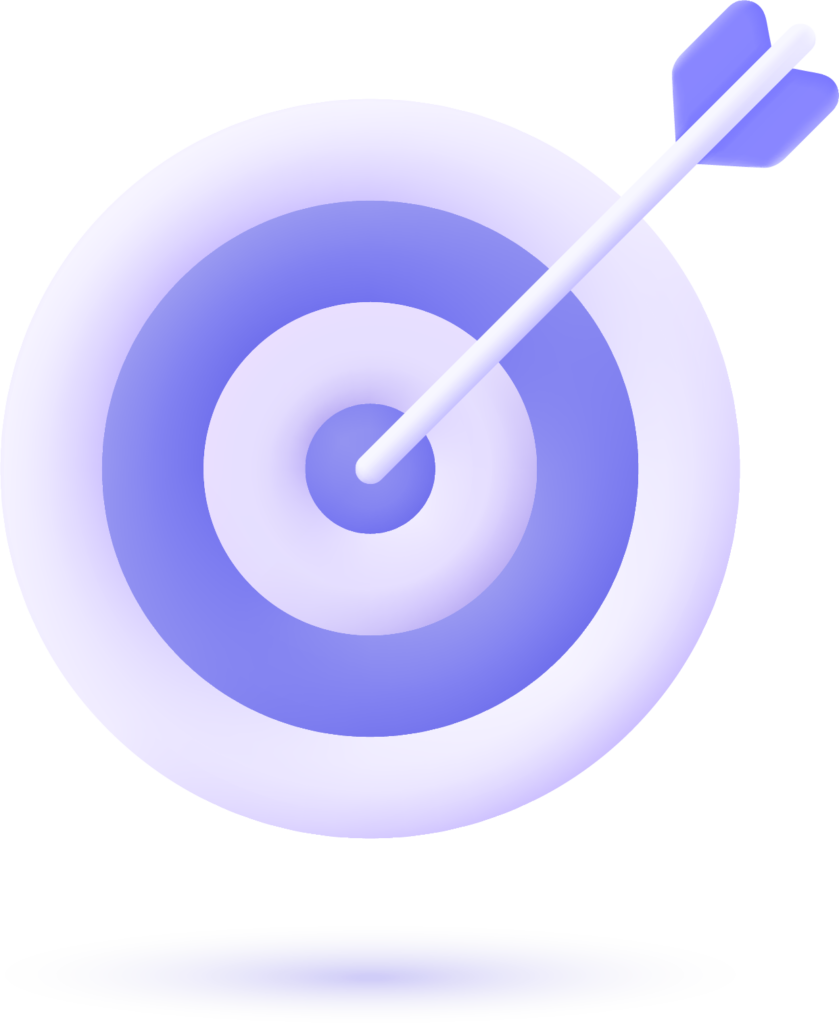Unlike B2C, where quick purchases dominate, B2B sales cycles are longer, often involving multiple stakeholders and complex decisions. Whether you’re running a SaaS business or a B2B ecommerce platform, understanding the marketing funnel stages and optimizing pipeline management can skyrocket your revenue.
What Is a B2B Marketing Pipeline?
A B2B marketing pipeline is a structured process that guides prospects from initial awareness to becoming paying customers. It aligns marketing and sales efforts to nurture leads through each stage of the sales funnel, ensuring no opportunity slips through the cracks. By focusing on B2B lead generation and pipeline stages, businesses can track progress, identify bottlenecks, and forecast revenue with precision.
The pipeline differs from a sales funnel in perspective: while the funnel maps the buyer’s journey (awareness to purchase), the pipeline outlines the seller’s actions to move prospects toward a closed deal. For SaaS companies, this means nurturing leads through demos and trials, while B2B ecommerce might prioritize personalized offers and negotiations.
Why Is the B2B Marketing Pipeline Critical?
A robust marketing pipeline fuels revenue growth by:
- Streamlining Lead Flow: Ensures leads move smoothly through the B2B marketing funnel, reducing drop-offs.
- Improving Forecasting: Clear pipeline stages help predict revenue and allocate resources effectively.
- Enhancing Alignment: Bridges marketing and sales to focus on shared goals, like generating high-quality leads.
- Boosting Efficiency: Identifies bottlenecks, such as stalled deals, to optimize the SaaS sales cycle.
- Driving ROI: Tracks the impact of campaigns, ensuring marketing spend delivers measurable results.
B2B Marketing Pipeline vs. B2C: Key Differences
| Aspect | B2B | B2C |
|---|---|---|
| Sales Cycle | Longer, with multiple decision-makers. | Shorter, often impulse-driven. |
| Focus | Relationship-building, personalized solutions. | Brand awareness, quick conversions. |
| Pipeline Stages | Complex, with demos and negotiations. | Simpler, with fewer touchpoints. |
The 7 Key Stages of a B2B Marketing Pipeline
Every B2B marketing pipeline is unique, but most follow these seven stages to guide prospects from initial contact to loyal customers:
1. Lead Generation
This stage kicks off the pipeline by attracting potential customers through B2B lead generation tactics like content marketing, SEO, paid ads, and social media. The goal is to fill the pipeline with prospects who match your ideal customer profile (ICP).
Example: A SaaS company might offer a free eBook on LinkedIn to capture leads interested in project management tools.
2. Lead Nurturing
Once leads enter the pipeline, nurturing builds trust and keeps them engaged. Use personalized emails, webinars, and case studies to address pain points and move prospects closer to a decision.
Example: Send a series of emails with how-to guides and customer success stories to educate leads about your solution.
3. Lead Qualification
Qualification separates high-potential leads from those unlikely to convert. Use frameworks like BANT (Budget, Authority, Need, Timeline) or lead scoring in your CRM to identify marketing-qualified leads (MQLs) and sales-qualified leads (SQLs).
Example: Score leads based on website visits, form submissions, and company size to prioritize outreach.
4. Demo or Trial
For SaaS and tech-driven B2B companies, demos or trials showcase your product’s value. Tailor the demo to the prospect’s specific needs, using insights from discovery calls to highlight relevant features.
Example: Conduct a live demo showing how your software streamlines workflows, addressing the prospect’s key challenges.
5. Proposal
Present a compelling proposal that outlines your solution, pricing, and unique value proposition. Address objections and reinforce why your offering stands out.
Example: Share a detailed proposal with a clear ROI breakdown and customer testimonials.
6. Negotiation and Commitment
This stage involves addressing final concerns, negotiating terms, and securing a verbal or written commitment. Be prepared to handle price objections or logistical issues.
Example: Offer flexible payment terms or a pilot program to ease concerns and close the deal.
7. Closing and Post-Sale
Seal the deal with a signed contract and ensure a smooth handoff to customer success for onboarding. Post-sale, focus on delivering value to retain customers and encourage advocacy.
Example: Provide a comprehensive onboarding program and regular check-ins to ensure customer satisfaction.
Best Practices for Optimizing Your B2B Marketing Pipeline
To maximize conversions and revenue, optimize each pipeline stage with these strategies:
Lead Generation
- Define Your ICP: Analyze past closed-won deals to target prospects with the highest conversion potential.
- Use Omnichannel Outreach: Combine email, LinkedIn, and paid ads for a cohesive demand generation strategy.
- Automate Qualification: Tools like Chili Piper can qualify inbound leads and schedule appointments, boosting efficiency.
Lead Nurturing
- Personalize Content: Tailor emails and resources to the prospect’s industry and pain points.
- Leverage Automation: Use CRM tools to send timely, relevant content based on lead behavior.
- Track Engagement: Monitor opens, clicks, and downloads to gauge interest and adjust outreach.
Lead Qualification
- Adopt BANT or SPIN: Use proven frameworks to assess fit and prioritize high-value leads.
- Train SDRs: Ensure sales development reps focus on revenue-driving meetings, not just filling calendars.
- Use ABM: Target high-value accounts with personalized campaigns to boost conversion rates.
Demo or Trial
- Lead with Value: Highlight features that address the prospect’s top pain points first.
- Avoid Overload: Focus on relevant capabilities to keep the demo concise and impactful.
- Use Specific Social Proof: Share case studies of similar clients instead of generic name-dropping.
Proposal
- Follow Up Persistently: Stay in touch with value-added messages, like relevant customer stories.
- Keep It Clear: Ensure the proposal is concise, with a strong value proposition and transparent pricing.
Negotiation and Commitment
- Delay Price Talks: Address other concerns before negotiating price to maintain leverage.
- Uncover Objections: Ask questions to understand the root of price resistance or hesitation.
Closing and Post-Sale
- Address Lingering Concerns: Proactively raise and resolve potential objections.
- Prioritize Late-Stage Deals: Follow up promptly to secure signatures and avoid delays.
- Focus on Onboarding: Deliver a seamless post-sale experience to reduce churn and build loyalty.

Case Study: How DemandNexus Transformed a SaaS Company’s Pipeline
Client: A SaaS provider offering HR management software. Challenge: The client faced a clogged pipeline with low-quality leads and a lengthy SaaS sales cycle, resulting in missed revenue targets. Solution: DemandNexus implemented a tailored SaaS go-to-market strategy, refining their ICP, optimizing lead nurturing with personalized content, and using Gong to analyze sales calls for better qualification. We also streamlined their demo process to focus on high-value features. Results:
- Increased MQL-to-SQL conversion rate by 30% in four months.
- Shortened the sales cycle by 20% through targeted nurturing and demos.
- Boosted closed-won deals by 25%, driving a 15% revenue increase.
DemandNexus’s data-driven approach proves that a well-optimized pipeline can transform business outcomes. Want to supercharge your pipeline? Contact DemandNexus for expert B2B lead generation and pipeline management solutions.
Leveraging Tools for Pipeline Management
Tools like Gong and CRMs are game-changers for managing your B2B marketing pipeline:
- Gong: Analyzes sales calls to uncover insights, improve qualification, and coach reps for better demos and negotiations.
- HubSpot: Tracks leads, automates nurturing, and provides pipeline visibility.
- Chili Piper: Automates lead qualification and appointment scheduling for inbound leads.
- LinkedIn Ads: Targets high-value prospects for lead generation and nurturing.
Metrics to Track in Your B2B Marketing Pipeline
Monitor these B2B marketing metrics to ensure your pipeline performs at its best:
| Metric | Why It Matters |
|---|---|
| Pipeline Velocity | Measures how quickly leads move through the pipeline. |
| Conversion Rate | Tracks the percentage of leads advancing to the next stage. |
| Cost per Lead (CPL) | Ensures marketing spend delivers high-quality leads. |
| Customer Acquisition Cost (CAC) | Evaluates the efficiency of your pipeline in acquiring customers. |
Final Thoughts
A well-optimized B2B marketing pipeline is your roadmap to consistent revenue growth in 2025. By mastering the seven pipeline stages, leveraging tools like Gong, and implementing data-driven strategies, you can shorten the SaaS sales cycle, boost conversions, and build lasting customer relationships. Whether you’re in B2B ecommerce or SaaS, a streamlined pipeline ensures every lead counts.
Ready to take your pipeline to the next level? DemandNexus offers expert solutions to optimize your B2B marketing funnel and drive measurable results. Contact us today to start building a pipeline that delivers.



